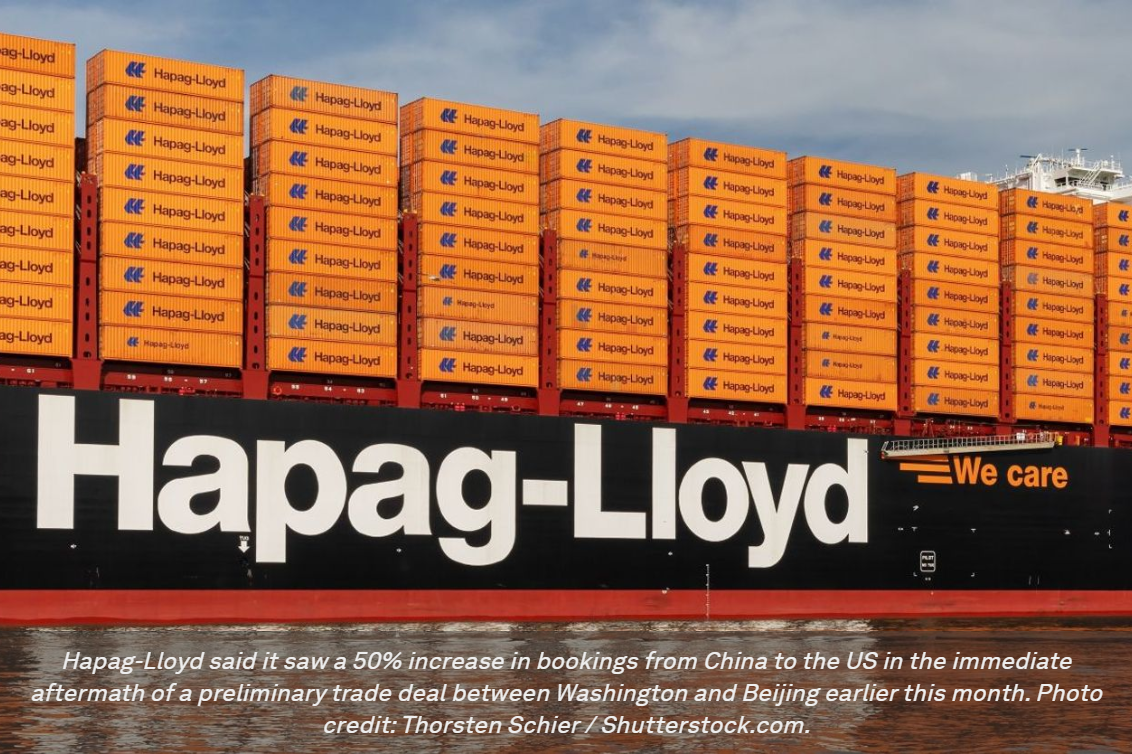
How should one think about planning their supply chain to and from the US during the upcoming peak season?
The easy answer would be to simply state that everything is unpredictable, and hence, you must resort merely to short-term tactical actions. And while there is some truth to the unpredictability and need for a tactical approach, this does not mean the imminent peak season is completely unpredictable.
Let us start with what we know, then follow up with what further developments will likely be. On that basis, it will emerge that some elements are indeed partially predictable.
Presently, we know that reciprocal tariffs on countries other than China are on pause until July 9. We also know that the US tariffs on China are lowered to 30% and Chinese tariffs on the US are at 10% until Aug. 14.
We know that carriers reduced capacity from Asia to the US West Coast by 18% from the US tariffs announcement on April 2 until the announced pause in China tariffs. The capacity from Asia to the US East Coast was adjusted down by 7%.
We know that various carriers and forwarders have reported a cut of 20% to 40% in bookings from China due to the tariffs.
We know that following the partial pause in China tariffs, carriers have seen a surge in cargo bookings. Not much has been forthcoming in terms of data yet, but Hapag-Lloyd has mentioned a nearly 50% increase in bookings from China, not compared with the recent slump, but compared with the situation before April 2.
These are all elements we know to be factually true.
Then there are elements we can predict with a good degree of certainty.
Spot rates in the short term will rise sharply. The carriers cannot physically un-blank the blank sailings rapidly. This takes a little while. That means right now demand exceeds the capacity available, which inevitably will cause a sharp spike in spot rates. This will continue until enough capacity has been brought back into the trans-Pacific.
Given the sharp rise in spot rates, it is also inevitable that carriers will indeed place more capacity into the trade. One way to do that is to blank sailings on other ex-Asia trades, such as Asia-Europe, Asia-Indian subcontinent and Asia-South America. This is likely to happen, especially where spot rates on those trades have been trending downward.
The blank sailings out of Asia for the past four weeks are simply a fact already. But that also means we will now see a four-week period of significant blank sailings on the backhaul from the US to Asia. This also means the ability of carriers to reposition empty containers back to China is reduced. This reduced amount of repositioning will“hit”China about three to four weeks into the future.
Given the two deadlines of July 9 and Aug. 14, it is very predictable that US importers will attempt to fast-track part of their peak season cargo where possible. This means the main part of the trans-Pacific peak will be from June to mid-August. The drop in empty container repositioning will come to fruition in the middle of this period. This could lead to sporadic and temporary equipment shortages.
Will the surge in Chinese exports lead to congestion at US ports? This is very likely, although it is a matter of nuance in terms of how severe it will be. The main factor is how quickly the carriers can bring more capacity into the trans-Pacific. If it happens rapidly, there will be a significant problem, but if it happens more gradually, the impact will be less severe. It will nonetheless put pressure on truck, rail and chassis availability as we get closer to the middle of June.
Post-pause uncertainty
Where the predictions become much more problematic is when we get to the expiry of the pause on reciprocal tariffs. The latest statements from the US government imply that the US will announce the new reciprocal tariffs within the next two to three weeks. But what the level will be and whether it will only come into force on July 9 is not known. The same applies for the Aug. 14 deadline with China.
If the tariffs revert to high levels, we should expect cargo volumes to once again drop sharply, in part because shippers will look to the past track record of the trade war and conclude that“wait and see” appears to be the best strategy under the circumstances. And if this subsequently leads to yet another round of cargo declines followed by a cargo surge and spot rate hikes, this might be an acceptable risk. It should also be noted that the rate spike we are seeing now and in the coming week entails a much lower cost than if the importers had chosen to move cargo subject to the 145% tariffs.
All in all, the plan — insofar as there is a medium-term plan — would have to be one that assumes potentially another stop-start cycle of container cargo movements to the US.

